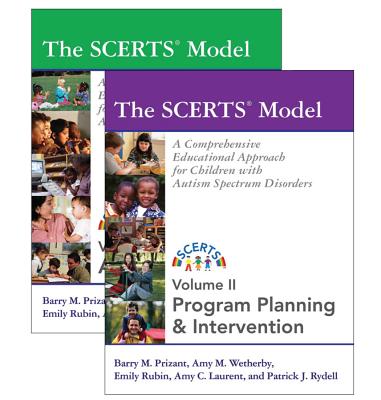
Prizant, Barry
product information
description
6A groundbreaking synthesis of developmental, relationship-based, and skill-based approaches, The SCERTS(R) Model provides a framework for improving communication and social-emotional abilities in preschool and primary school students with autism spectrum disorders (ASD) and their families. Developed by internationally recognized experts, SCERTS(R) supports developmental progress in three areas: Social Communication (communicating spontaneously and establishing relationships), Emotional Regulation (regulating emotional arousal to support learning and engagement), and Transactional Supports (elements that aid a child's progress as he or she works toward a goal). With the two-volume manual set, early intervention professionals will have comprehensive and practical guidance on using SCERTS(R) in assessment and intervention. Volume I: Assessment gives detailed background information on The SCERTS(R) Model and guides professionals through the assessment process. Early interventionists will examine the research foundations and the recommended practices that inform the model; learn about specific goals and objectives for each of the three SCERTS(R) components; get a detailed listing of developmental milestones that contribute to the recommended assessment and intervention plans; explore The SCERTS®e; Model's similarities and differences with other models; and discover how to use the model in educational settings. Assessment report and observation forms are included to help collect information and monitor child progress. Volume II: Intervention gives early interventionists explicit instruction on how to help children reach their goals following assessment. They'll learn how to prioritize and set social communication and emotional regulation goals for young children; choose meaningful and purposeful activities to help them reach the goals, implement four types of transactional support (learning supports, interpersonal support, support to families, and support among professionals); and learn how to link all three SCERTS(R) components in program planning. In-depth vignettes on diverse children and families illustrate implementation of the model, and forms are included to help with intervention planning. Semi-structured yet flexible enough to respond to individual differences, SCERTS(R) can be applied in many different settings and used with other intervention approaches. With this child- and family-centered model, based on over two decades of research and clinical experience, early interventionists will have everything they need to evaluate and promote the social and emotional development of children with ASD. These manuals are part of The SCERTS(R) Model, a groundbreaking framework for improving communication and social-emotional abilities in individuals with autism spectrum disorders (ASD) and their families. Developed by internationally recognized experts, SCERTS effectively supports developmental progress in three domains: Social Communication, Emotional Regulation, and Transactional Support.
Learn more about the whole SCERTS(R) system.
member goods
No member items were found under this heading.
notems store


Clinical Decision Making for Skill-Acquisition ...
by Jowett Hirst, Ph. D. Erica S.
Paperback /Paperback$22.49

Reading Comprehension, Grade 1
by American Education Publishing
Calendar/Blank Book /Paperback$6.76
listens & views

COMPLETE RELAX-THE BEST SONGS FOR ...
by COMPLETE RELAX-THE BEST SONGS FOR THE RELAXATION AND
COMPACT DISCout of stock
$27.99
Return Policy
All sales are final
Shipping
No special shipping considerations available.
Shipping fees determined at checkout.



